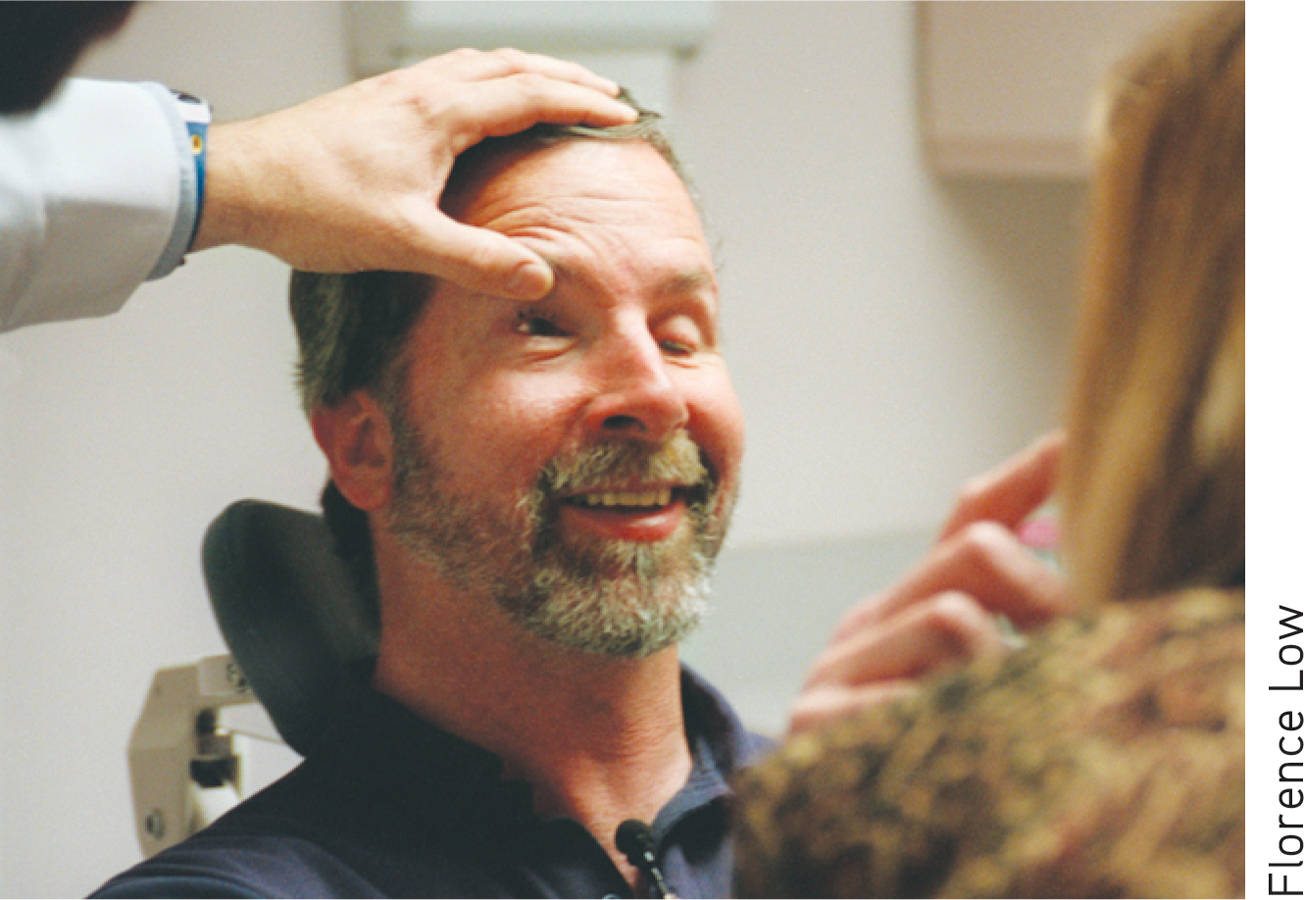Chapter Introduction

MYTH OR SCIENCE?

Is it true …
That subliminal messages can produce lasting changes in your attitudes and behavior?
That an object’s color is not an intrinsic property of the object?
That pheromones can make some people irresistible to members of the preferred sex?
That different tastes are detected on different parts of your tongue?
That most psychologists study extrasensory perception (ESP)?
That magnets can relieve pain?
3
Sensation and Perception
hailin/Shutterstock
Learning to See
PROLOGUE
IN THIS CHAPTER:
MIKE WAS JUST THREE YEARS OLD when a jar of chemicals, left in an old storage shed, exploded in his face. The blast destroyed his left eye and severely damaged his right eye. For more than four decades, Mike May was completely blind (Kurson, 2007).
But despite his blindness, Mike experienced—and accomplished—much more than most people ever dream of achieving. Always athletic, Mike played flag football in elementary school and wrestled and played soccer in high school and college. As an adult, he earned a master’s degree in international affairs from Johns Hopkins University, went to work for the CIA, and then became a successful businessman.


He also learned to skydive, wind-surf, water-ski, and snow-ski. How does a blind person ski down mountains? If you answered, “Very carefully,” you’d be wrong—at least in Mike’s case. With a guide skiing in front of him shouting “left” or “right” to identify obstacles, Mike hurtled down the most difficult black diamond slopes at speeds up to 65 miles per hour. In fact, Mike has won several medals in national and international championships for blind downhill speed skiing.
It was through skiing that Mike met his wife, Jennifer. An accomplished skier herself, she volunteered to be his guide at a ski slope. Today, Mike and Jennifer and their two sons are all avid skiers (Abrams, 2002).
In the 1990s, Mike started a successful company that develops global positioning devices—along with other mobility devices—for the blind. The portable navigation system gives visually impaired people information about their location, landmarks, streets, and so forth wherever they travel. With his white cane and guide dog, Josh, Mike traveled the world, both as a businessman and a tourist, ever optimistic and open to adventure (Kurson, 2007). His personal motto: “There is always a way.”
But in 1999, Mike’s keen sensory world of touch, sounds, and aroma was on the verge of expanding. A new surgical technique became available that offered the chance that Mike’s vision might be restored in his right eye. On March 7, 2000, Jennifer held her breath as the bandages were removed. “It was so unexpected—there was just a whoosh! of light blasting into my eye,” Mike later recalled (May, 2002b). For the first time since he was three years old, Mike May could see.
And what was it like when Mike could see Jennifer for the first time? “It was incredible,” he explained, “but the truth is, I knew exactly what she looked like, so it wasn’t all that dramatic to see her. The same with my kids. Now, seeing other people that I can’t touch, well, that’s interesting because I couldn’t see them before.”
But what did Mike see? Anatomically, his right eye was now normal. But rather than being 20/20, his vision was closer to 20/1,000. What that means is his view of the world was very blurry. He could see colors, shapes, lines, shadows, light and dark patches. So why wasn’t the world crystal clear?
Although the structures of his eye were working, his brain did not know how to interpret the signals it was receiving. As neuropsychologist Ione Fine (2002) explained, “Most people learn the language of vision between the age of birth and two years old. Mike has had to learn it as an adult.” Indeed, there is much more to seeing than meets the eye.
Faces posed a particular challenge for Mike. During conversations, he found it very distracting to look at people’s faces. As Mike wrote in his journal, “I can see their lips moving, eyelashes flickering, head nodding, and hands gesturing. It was easiest to close my eyes or tune out the visual input. This was often necessary in order to pay attention to what they were saying” (May, 2004).
And what was it like the first time he went skiing, just weeks after his surgery? Mike was dazzled by the sight of the tall, dark green trees, the snow, and the distant peaks against the blue sky (May, 2004). But although you might think that vision, even blurry vision, would be a distinct advantage to an expert skier, this was not the case. Mike found it easier to ski with his eyes closed, with Jennifer skiing ahead and shouting out directions. With his eyes open, he was overwhelmed by all the visual stimuli and the frightening sense that objects were rushing toward him. “By the time I thought about and guessed at what the shadows on the snow meant, I would miss the turn or fall on my face. It was best to close my eyes,” he explained.
Throughout this chapter, we will come back to Mike’s story. We’ll also tell you what neuropsychologists Ione Fine and Don MacLeod learned after conducting fMRI scans of Mike’s brain. And, later in the chapter, we’ll see how well you do, compared to Mike, at deciphering some visual illusions. 